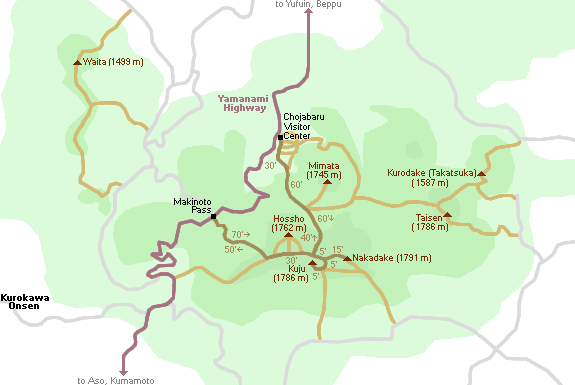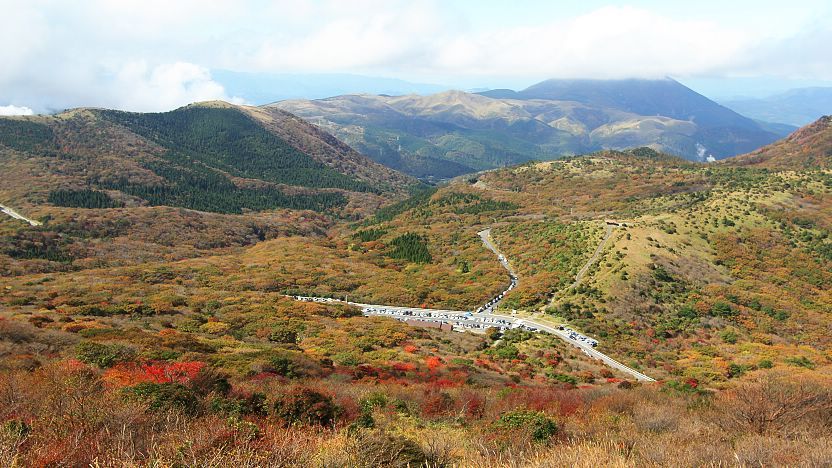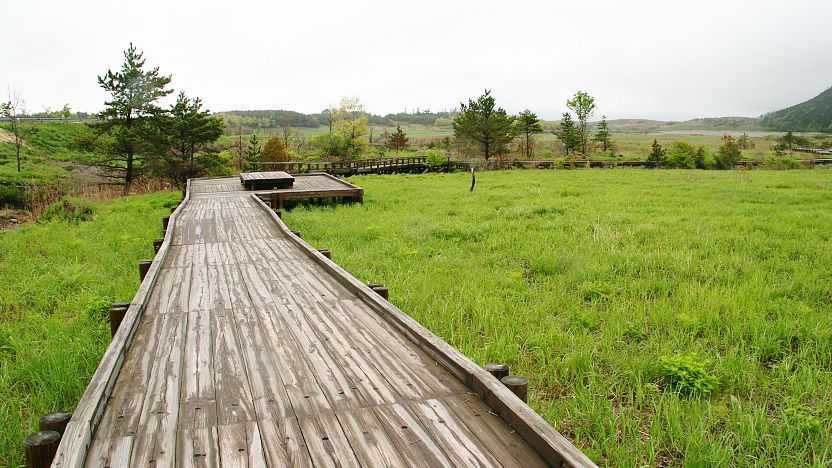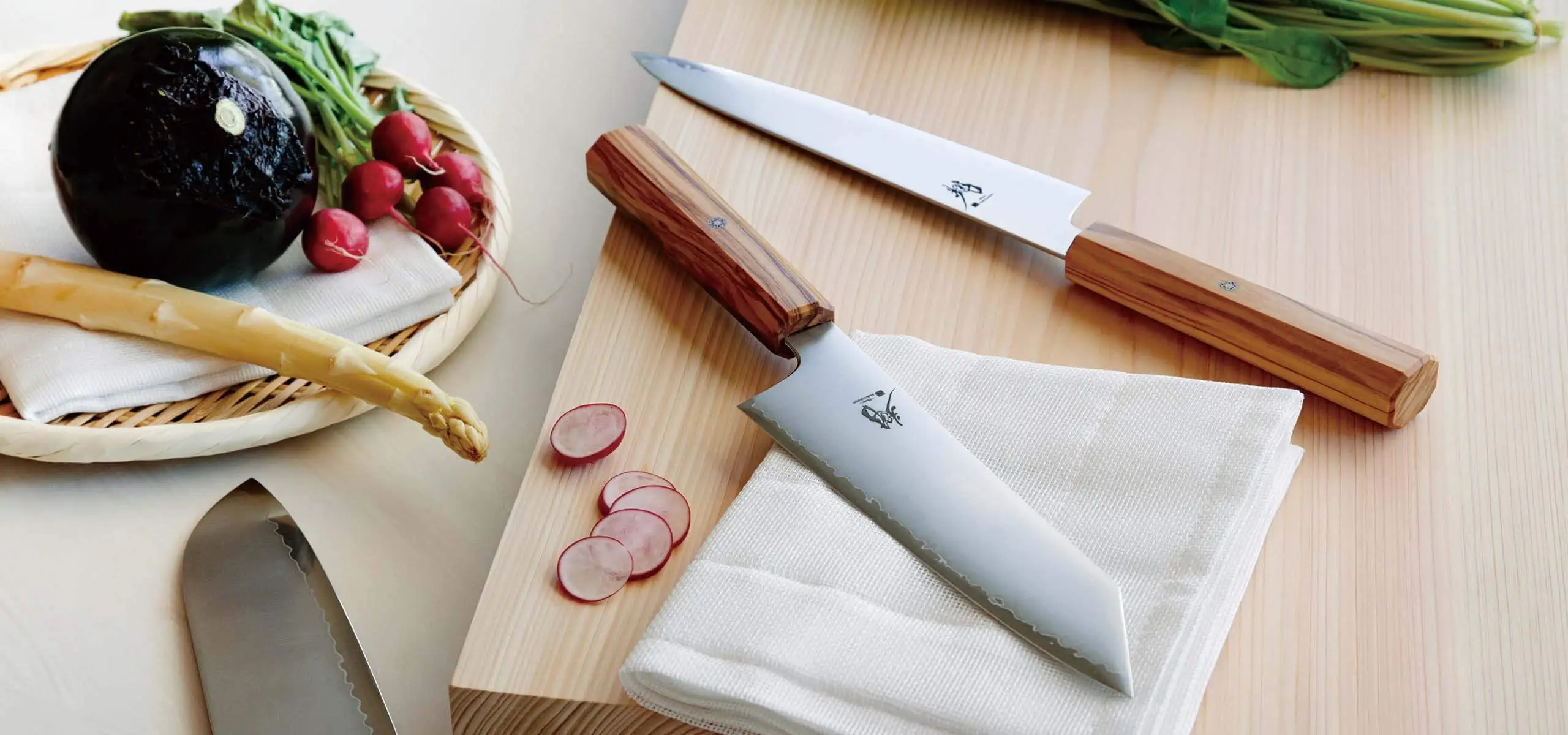The Kuju mountain range (九重山, Kujūsan) is part of the Aso-Kuju National Park and includes the highest peak on the island of Kyushu. The mountains are covered by a network of hiking trails that offer spectacular views of the volcanic terrain. Between late October and mid November, Kuju becomes one of the best places on Kyushu to find fall colors.
The Kuju mountains are located along the Yamanami Highway that extends from Beppu to Aso as part of the attractive Trans Kyushu Route. The two main hiking trailheads are located at the Makinoto Pass and the Chojabaru Visitor Center, which are both along the popular road.

Of the park's two main trailheads, the Makinoto Pass is located at a higher elevation and is closer to the main mountain peaks, while the Chojabaru Visitor Center has informative displays about the area and more facilities. Depending on the trailhead and route taken, a round trip to Kuju's main peaks typically takes between four and six hours.
The park's highest point is the Nakadake (中岳) peak at 1791 meters. The nearby Kuju (久住山) peak stands slightly shorter at 1786 meters and is popular for its fantastic views. Another popular peak to visit is Hossho (星生山), which has steam emitting vents along its slopes. The peaks of the Kuju mountains are usually covered in snow from December through March.

Travelers who are looking for a less time consuming and physically demanding hike can explore a network of walkways around the Chojabaru Visitor Center. There is a wetland beside the visitor center above which wooden walkways are elevated. A looping 2.5 kilometer course takes 30-40 minutes to walk, and the Kuju mountains can be seen from along the path.
Due to the area's volcanic activity, there are quite a few onsen (natural hot springs) in the Kuju area. Around the base of the mountains there are a few ryokan and hotels with hot spring baths that can be used by overnight guests and in some cases day trippers. The particularly attractive hot spring town of Kurokawa Onsen is also located nearby.

Getting there and around

By car
The Kuju Mountains stand along the popular Trans Kyushu Route, and the trailheads of both the Makinoto Pass and the Chojabaru Visitor Center are located along the attractive Yamanami Highway. The mountains are a two hour drive from Kumamoto and a 75 minute drive from Beppu. Rental car outlets can be easily found in both cities.
By bus along the Trans Kyushu Route
For travelers using by public transportation along the Trans Kyushu Route, the Kyushu Odan Bus by Kyusanko provides connections to the Kuju Mountains from Kumamoto in the west (3 hours, about 3500 yen) and Beppu in the east (2 hours, about 2500 yen). The buses stop at both the Makinoto Pass and the Kuju-tozanguchi bus stop beside the Chojabaru Visitor Center.
The Kamenoi bus company also operates two buses between Yufuin and the Makinoto Pass on weekends and public holidays from April to November. The one way trip takes about 80 minutes and costs 1350 yen.
By bus from the north
For travelers coming from Fukuoka, the fastest way to reach the Kuju Mountains directly can be taking a limited express train to Bungo Nakamura Station on the JR Kyudai Line (2 hours, about 4500 yen) from where there are infrequent community bus connections to the Kujū-tozanguchi (九重登山口) bus stop beside the Chojabaru Visitor Center (40 minutes, 500 yen one way, 3-6 connections/day, some require a transfer of buses at Handa Kōryū Center (飯田交流センター) along the way) and outside winter to the Makinoto Pass.

Hours and Fees
Chojabaru Visitor Center
Hours
Closed
Admission
Questions? Ask in our forum.




